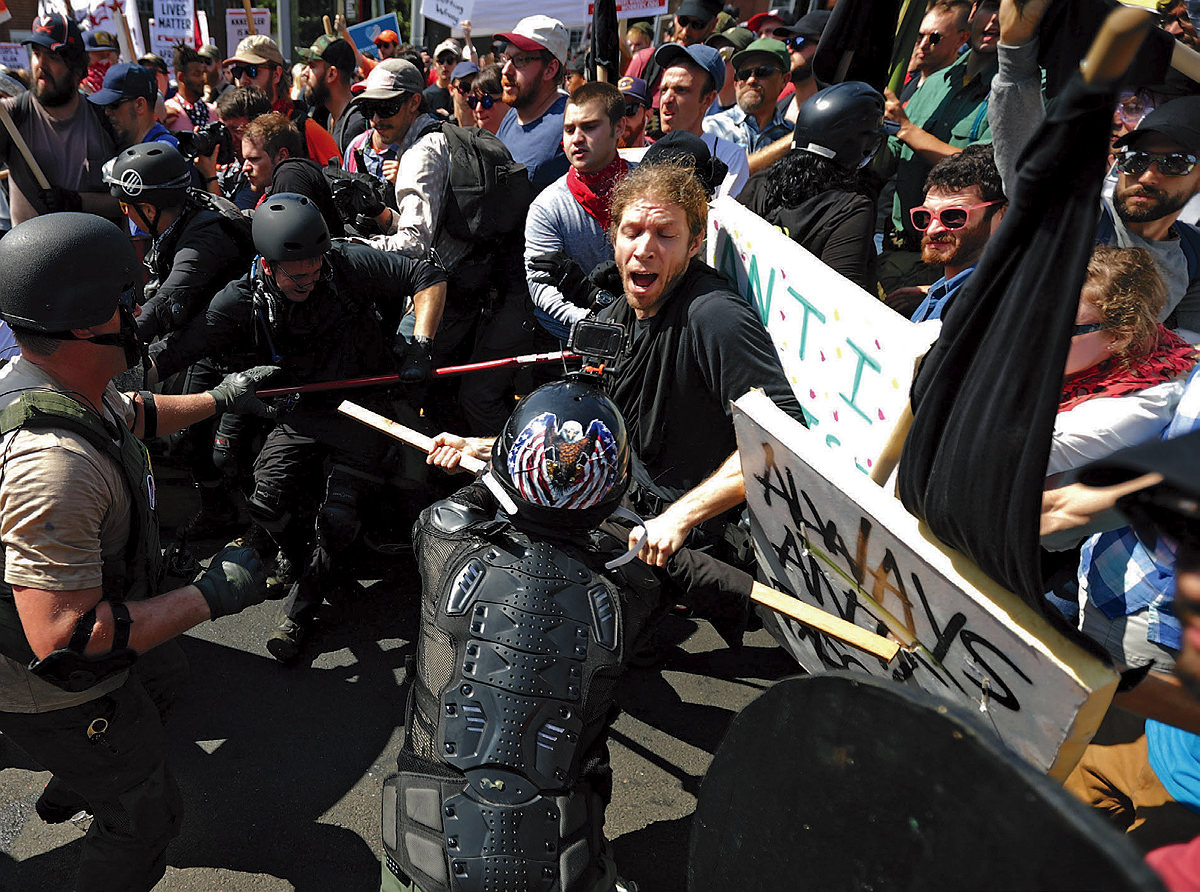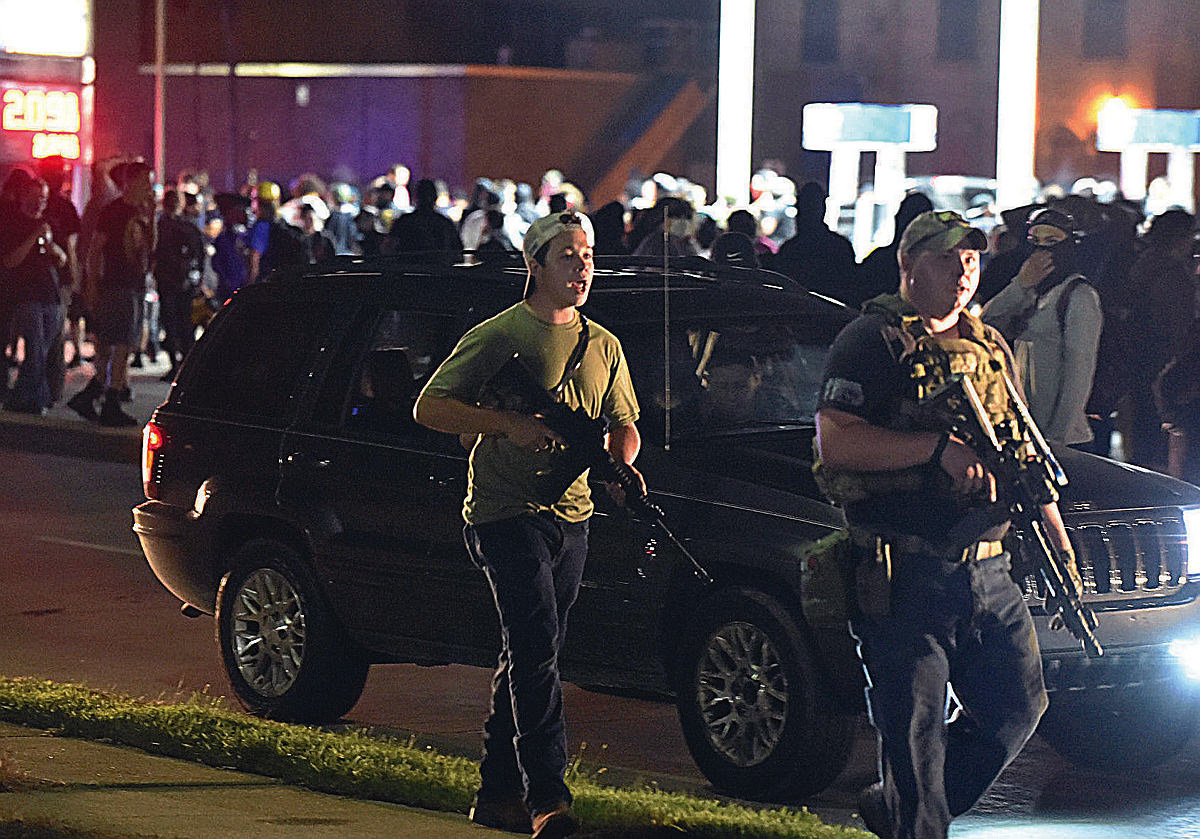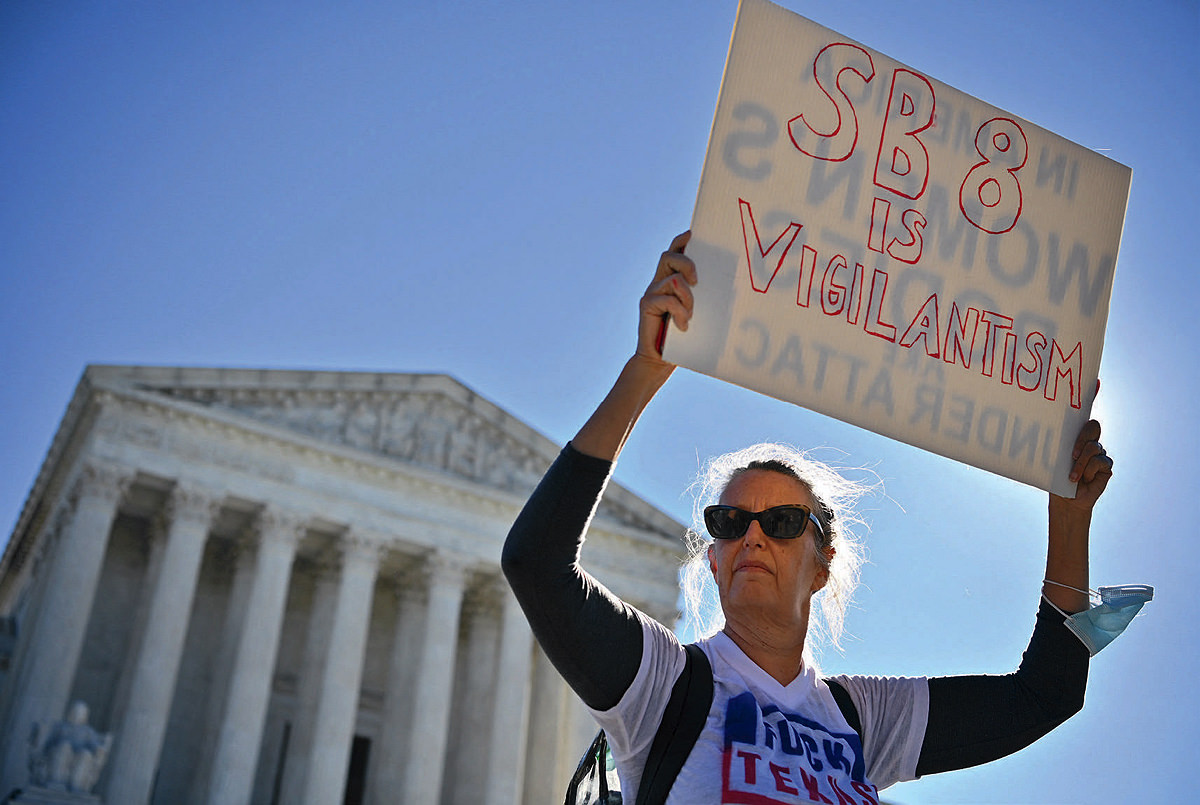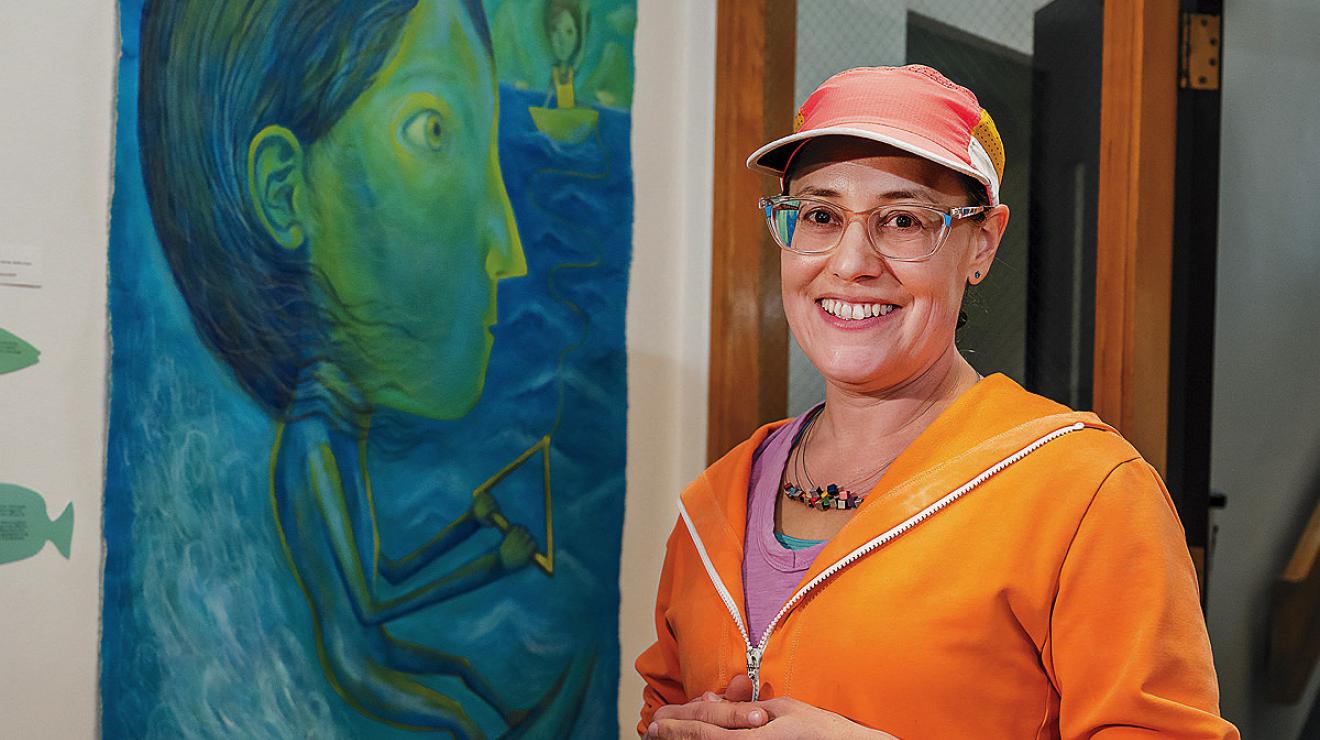When Susanna Siegel was a teenager, two political events shook her world. One was the Nicaraguan Revolution. As a 15-year-old living in Ithaca, New York, she traveled to Managua in 1985 to join the youth brigades supporting the Sandinista movement. It was a trip organized by the alternative public high school she attended—“a bottom-up kind of place, with a focus on social justice”—and Siegel and her classmates were among thousands of volunteers who’d fanned out across the war-ravaged Nicaraguan countryside to pick coffee, plant trees, build houses, and teach literacy. Siegel’s crew met with youth groups and women’s groups in the capital city.
“It blew my mind that teenagers had started this revolution,” says Siegel, who is now Pierce professor of philosophy. “That was an absolutely formative moment for me.” The rebellion’s promise faded in the end, and Nicaragua’s government curdled into a brutal regime, but during those early years, she recalls, it felt inspiring: a grassroots movement standing up to dictatorship and U.S. imperialism, led by students. “I just saw the intersection of personal life and politics in this very concrete way,” she says. “And that stuck with me, this interest in the informal part of politics, outside of the formal aspects of governance and policy and institutions.” In this informal realm, she sensed, agency and power were manifested in the people. For her, it was where politics came alive.
The other event was the South African anti-apartheid movement. At Cornell University, where Siegel’s parents taught (her father was an anthropologist, her mother an English professor), the protests took on a particular intensity. Despite a worldwide divestment campaign, the university’s president, Frank H.T. Rhodes, refused to cut financial ties to South Africa [Correction, January 3, 2024: This story originally incorrectly stated that Frank H.T. Rhodes was a descendant of Cecil Rhodes, the British mining and railroad magnate and Cape Colony prime minister. He was not.] For months in 1985, students and faculty protested. They organized sit-ins and rallies and were arrested by the hundreds. There were petitions, speeches, and hunger strikes. Students built shantytowns out of tar paper and plastic all over campus. In the end, Cornell’s administration partially relented, reducing—though never fully relinquishing—investment holdings in South Africa. “It was very powerful,” Siegel says: witnessing that sustained, organized activism and the force it could exert.
These are the stories that tumble out when she is asked how she came to be the kind of philosopher she is now, one who’s often drawn to subjects like journalism, social protest, and, most recently, vigilantism. Subjects, in other words, that explicitly address the lived, historical world—what some might call the “real world” (although Siegel, with a philosopher’s careful exactitude, doesn’t call it that). Seated on the couch in her Emerson Hall office, wearing shorts, tennis shoes, and a bright orange hoodie—topped with a cap that reads “Florida ACLU”—she exudes a kind of cheerful intensity. “I was always interested in phenomenology,” she says, “in people’s experiences of things.”
Seeing and Knowing, Unmoored
The same is increasingly true in her scholarly work, where the political dimensions of her research have become sharper and more visible. A specialist in epistemology and the philosophy of mind, Siegel has always been fascinated by perception: what and how we see, and the effect that has on what we can know. Her 2010 book, The Contents of Visual Experience, argued that conscious visual perception includes all kinds of complex properties: not just color, shape, light, and motion, but other, richer attributes, too. For instance, it encompasses what kind of thing we see—a tree, a bicycle, a dog?—and causal characteristics, like the property a knife can have while slicing through a piece of bread. Perception can even involve personal identity, Siegel argued: the property of being John Malkovich. The book’s central claim was that being able to visually recognize things, such as one’s own neighborhood, or pine trees, or John Malkovich, can influence how those things look to the person who sees them.
But as she was finishing that book, another question began to bother her: if being able to recognize your neighborhood influences how it looks to you, then couldn’t beliefs, desires, and fears do the same? And if prior beliefs could influence someone’s visual experience, how might those experiences, in turn, strengthen those very beliefs? She thought about the famous (though perhaps apocryphal) story of the seventeenth-century Dutch preformationists, who believed that the embryos of every organism grew from miniature pre-formed versions of their adult selves. Microscopes were a recent invention then, opening up previously invisible worlds to science, and when the preformationists peered through the lenses, what they saw—or at least claimed to see—were tiny human embryos in sperm cells. The story gripped Siegel. “It’s the idea that because they had that theory, they were like, ‘I saw it,’” she says. “And what are you going to do? It’s a scientific instrument, the person is looking through it, and they’re seeing this.” And perhaps it was true: “Maybe they really were having the experience of seeing this little embryo curled up in a sperm cell. So, we have an epistemic problem here. What now?”

She tried to answer that question in The Rationality of Perception, published in 2017. The book challenged a long-held assumption about the mind: that although reasoning can be irrational, perception cannot. She argued that, in fact, the two are often deeply intertwined in ways that can hijack a person’s basic sensory experience, transforming it “unbeknownst to them,” into a feedback loop, rather than a channel for absorbing new information. And yet, perception is indispensable to every type of inquiry, from the practical to the scientific to matters of ordinary curiosity. We cannot do without it. The important thing, Siegel concluded, is to reckon with its possible distortions. “The point of the book is that we should think of our perceptual experience as something that can be rational or irrational,” she says. “It’s not just an input to rational belief.”
The political dimensions of this argument immediately became clear. The news is full of episodes of violence, sometimes justified by stand-your-ground and self-defense laws, in which killers claim to have reasonably feared that the victim posed an imminent threat—even when the facts do not seem to support that perception. A number of high-profile killings have shared this “same exact structure,” Siegel notes, in which the “lethal threat” turns out to be an unarmed shoplifter, or a lost driver seeking help, or some other less-than-life-threatening figure. The police officer who shot and killed 12-year-old Tamir Rice “saw” a 185-pound man pulling a weapon from his waistband, not a child with a toy gun. The idea that perception can be irrational “has consequences for how we apply the ‘reasonable person’ standard” in legal cases, she says. “It really messes with your epistemology of perception … because perception is supposed to be the thing that explains knowledge. But if it’s downstream of other mental states, it unmoors everything.”
Racism, of course, often plays a role in these violent episodes, and in The Rationality of Perception Siegel analyzed how prejudice might explain what people perceive. “The annals of American history are replete with narratives in which racialized identities of being white or black are taken for granted,” she wrote in the book’s preface. In many of those narratives, “a white perceiver instantly perceives a black perceiver as dangerous, threatening, or out of place.” Later chapters laid out how “culturally entrenched presumptions” can distort the perceptual experiences of individual people. “When one considers the patterns of obtuse reactions that racial attitudes give rise to, and the incomprehension that occurs alongside their felt normality,” she wrote, “it seems plain that something has gone epistemically wrong.”
With The Rationality of Perception, Siegel’s scholarly work began to explicitly address the relationship between politics and perception, and it attracted attention beyond the world of philosophy. At book talks, audience members asked for advice on counteracting the phenomenon she described. At Washington University in St. Louis, an art and philosophy student named Becky Moon produced a series of paintings and figurines inspired by Siegel’s work: stargazers, water-skiers, wandering minds, a seaside gathering of an eclectic “public.” They were displayed on campus last fall in an exhibit titled “Sea of Perception,” and in her opening-night remarks, Moon spoke of “tying the horseshoe into a knot” with art that gives visual expression to philosophical narratives and noted the profound everyday importance of Siegel’s ideas.
Ege Yumusak, Ph.D. ’22, echoes that sentiment. “Susanna wrote, I would say, the two most important texts in the philosophy of perception,” she says, referring to The Contents of Visual Experience and The Rationality of Perception. A Mellon Teaching Fellow at Columbia University who studies ideology and political disagreement, Yumusak came to Harvard in 2018 to study with Siegel, whom she describes as “living and breathing philosophy.” After Siegel’s previous work on the psychological dimensions of perception, her “move to the social,” Yumusak adds, “was very much the next step.”
The Cluster of Political Vision
Siegel’s current book-in-progress, for which she won a Guggenheim Fellowship and took a year’s sabbatical, is about vigilantism and its relationship to what she calls “political vision,” a concept akin to ideology but woolier. She explains that it’s the cluster of beliefs, values, fears, and other “aesthetic sensibilities” that, added together, define what a person perceives as disgusting, disturbing, intolerable, valuable, or reassuring about the world. Adherence to a political vision is what makes vigilante violence purposeful, rather than random.
“At some places and times,” Siegel writes, vigilantism “does more than legal institutions to determine political power.”
Drawing from historical examples and contemporary cases (recent headlines have supplied them in droves), the book will offer what Siegel believes is the first systematic philosophical analysis of vigilantism. That fact seems to startle her slightly. “Vigilantism should be a topic for philosophy for the same reasons that law is,” she wrote in a 2022 Washington University Review of Philosophy paper that was her first academic foray into the subject. Like law, she argued, it can be a major political force—with “complex relationships to morality and coercion” that must be dissected to be understood. After all, Siegel continued, emphasizing the stakes, “at some places and times,” vigilantism “does more than legal institutions to determine political power.”
Among the book’s first tasks is formulating a definition for vigilantism. It’s a tricky challenge. The range of circumstances under which a person might “take the law into one’s own hands,” as Siegel puts it, is vast, and vigilantism can overlap in various ways with mobs, protests, and self-defense. In some cases, vigilantes make genuine (though often morally troubling) attempts to solve large-scale, widely acknowledged problems. In other cases, their actions are what she calls “performative vigilantism.” To explain, Siegel recounts a story, first documented by historian Kerry Pimblott, about the city of Cairo, in southern Illinois. During the 1950s and ’60s, Cairo was home to a “persistently terrorized civil rights movement” and militant segregationists aligned with the Ku Klux Klan. In 1967, after a 19-year-old black soldier passing through town was arrested at a traffic stop and died within an hour of being jailed, the city’s young people reacted by throwing rocks and homemade bombs at white businesses.
In the aftermath, Cairo civil rights leaders negotiated a modest set of concessions from the city council: not desegregated schools or an end to employment discrimination, but the promise to hire one black firefighter and one black police officer, who would serve as assistant to the police chief. In response, 400 white citizens calling themselves the White Hats began patrolling the public housing project where most black residents lived, armed with police dogs, two-way radios, and police-provided rifles. This carried on for two years. The group harassed and surveilled black residents, conducted paramilitary drills, and in one incident fired directly into the housing project. They did all this “under the guise of solving a problem,” Siegel says, but the “problem” they were solving—on behalf of the only public that mattered to them—was black political power.
One other detail in that story catches Siegel’s attention: the police rifles. Part of what interests her in today’s vigilantism is the interplay between formal and informal politics. In the past, vigilante acts took place in mostly informal realms. “But today,” Siegel says, “we’re bombarded with examples of vigilantism that have much closer relationship with institutional channels, electoral politics, and formal governance.”
It’s widely known that rhetoric from established political figures can prompt ordinary people to violence. But the influence also moves in the opposite direction, Siegel says. At the 2017 “Unite the Right” rally in Charlottesville, James Fields Jr., a self-described neo-Nazi, deliberately rammed his car into a crowd of counterprotesters, killing one of them. He was convicted of murder and hate crimes and sentenced to life in prison. But since then, several states have passed laws granting immunity to people who drive their cars into protestors as an act of “self-defense.” It turns out, Siegel says, that Fields Jr.’s action was “proto-legal.”
Similarly, the Texas law SB-8, enacted in 2021, allows members of the public to sue anyone who helps a woman get an abortion, awarding $10,000 to people whose lawsuits were successful. Sidestepping constitutional limits that (before Roe v. Wade was struck down) prohibited public officials from prosecuting abortion providers, the Texas statute gave that authority instead to private citizens, incentivizing them to see themselves as law enforcers with coercive powers over their fellow citizens.
And there are times when it’s hard to even separate the formal and informal elements of vigilantism. After killing two protestors and severely injuring a third in Kenosha, Wisconsin, amid the civil unrest in the summer of 2020 following George Floyd’s murder, 17-year-old gunman Kyle Rittenhouse—who had traveled 20 miles from his home to protect a business he did not own—was acquitted of criminal homicide on self-defense grounds. Afterward, he was celebrated by Republican politicians like former president Donald Trump, Florida governor Ron DeSantis, J.D. ’05, and Georgia representative Marjorie Taylor Greene, as well as media celebrities Tucker Carlson and Ann Coulter. These are “all figures who embrace the use of violence against perceived antagonists,” Siegel notes.
Rittenhouse was labeled a vigilante...but his story seems to challenge the very meaning of the word.
Rittenhouse was labeled a vigilante, by both supporters and detractors. But his story seems to challenge the very meaning of the word. “Can an action be a case of ‘taking the law into one’s own hands’ if the action is legally authorized, as Rittenhouse’s killings were deemed to be?” Siegel asks. “Rittenhouse wasn’t acting in any official capacity. He was just an ordinary teenager.” In fact, that’s what he was praised for—“maintaining order when no one else would,” in Carlson’s words. “What a far cry,” Siegel says, “from the ancient idea that God should have a monopoly on deciding who lives and dies, and the modern idea that the state should have a monopoly on the legitimate use of force.”

She also notes that vigilantism is not inherently a tool of the right. As a form of action, it’s not tied to any specific political outlook. So why is vigilante violence so much more prevalent today on the American right? “One reason may be the political shifts in who distrusts federal law enforcement,” she says, adding that the distrust is visible now not just among people who show up at right-wing protests, but also government officials themselves.
The vigilantism project has been percolating for years. Most immediately, it grew in part out of two pieces of Siegel’s public philosophy: a 2021 interview on mob violence in the Los Angeles Review of Books, and an op-ed she coauthored the previous year in the Tampa Bay Times, on the “warrior mindset” used in police trainings to teach officers to believe they’re in extreme danger in everyday policing. Increasingly, that idea has been incorporated into self-defense trainings for civilians who, as the op-ed observed, “practice picturing themselves as a last stand between peace and anarchy.”
The Philosopher in the Public Square
That op-ed was one of a handful Siegel has published in the Tampa Bay Times, bringing a philosophical lens to topics like schadenfreude and hypocrisy in politics, COVID-19, and the interplay between authoritarianism and distrust in scientific expertise. (Siegel’s relationship with the newspaper began in 2020, when she was one of several philosophers to respond to a reporter’s query about finding meaning and purpose amid the pandemic’s uncertainty.)
“One thing I particularly love about Susanna is that her intellectual agenda is tethered to the urgency of her lived experience in a complex world,” says historian Caroline Light, who coauthored the “warrior mindset” op-ed with Siegel. A senior lecturer and director of undergraduate studies in women, gender, and sexuality studies, Light wrote the 2017 book Stand Your Ground: A History of America’s Love Affair with Lethal Self-Defense. “A lot of philosophers’ conversation is pitched at a certain level, accessible to a specific type of intellectual,” she says, “but Susanna is looking to make an intervention that engages everyone in the world who might also be concerned about a social phenomenon. To me, that’s a vulnerable place to be as an intellectual, to put yourself out there with a set of questions about controversial, urgent problems.”
Yale philosopher Jason Stanley, who calls Siegel “probably my closest friend and interlocutor in philosophy,” echoes that idea. “She’s one of our most astute analytical thinkers,” says Stanley, who wrote the 2018 bestseller How Fascism Works: The Politics of Us and Them, “and increasingly her mind is directed at these topics that most people wouldn’t pay attention to, like schadenfreude or vigilantism. What she’s doing is carving up social reality into kinds and properties that you might not have focused on, but once you do see them, you recognize them as important.”
He’s especially enthusiastic about Siegel’s recent work on journalism, which analyzes the dynamics of inquiry and relevance in everyday reporting. “There’s never been a philosophy of journalism,” Stanley says. “Susanna basically made it into an academic discipline.” In 2021, amid rising anxiety about threats to American democracy and the importance of a free press, she put together Harvard’s first course in the philosophy of journalism, called “Truth, Lies, and the Press.” Students (including several of that year’s Nieman Fellows) examined different “visions of journalism” from journalists Ida B. Wells and Walter Lippmann (A.B. 1910, Litt.D. ’44) and philosophers John Dewey and Hannah Arendt.
In a 2022 Nieman Foundation event, Siegel waded into the debate over journalistic objectivity with Deborah Douglas, then co-editor of The Emancipator, an online newspaper focused on racial justice. Distinguishing different strands of meaning embedded in the term “objectivity”—objective facts, objective descriptions, objective inquiry, objective observers, the appearance of objectivity—Siegel drew a contrast between objective people, with no perspective on anything (“which we all know is a myth”) and objective reporting methods (“valuable and definitive of journalism”). She concluded, “What’s happening is that the journalism and the journalists under attack are not falling short of objectivity….It’s the critics who are misusing this vocabulary and then weaponizing its misuse. What they’re defending is not objectivity.”
It makes sense that Siegel’s thinking about journalism began in the classroom. For 10 years, she taught an undergraduate course titled “Moral Reasoning About Social Protest,” assigning Plato, Hobbes, Marx, and Rawls alongside readings on the Attica prison revolt, the Harvard Living Wage Campaign, and a Los Angeles civil rights organization called the Bus Riders Union. Later, she taught a freshman seminar called “The State and Its Critics,” which gave students a taste not only of philosophy, but, as the syllabus states, of “some of the most basic questions about politics.”
“She’s very cognizant of how weird it feels, this fundamental disconnect in a methodology that looks for broader truths...but leaves behind our actual lives.”
“In philosophy, there’s always this tension between abstraction and real life,” says Amy Ojeaburu ’24, who took Siegel’s journalism course as a sophomore. “The whole ethos of philosophy is that we’re striving toward a generalization, a truth of some kind out there in the heavens,” she says. “But we tend to leave behind context and people and their experiences.” Siegel, Ojeaburu says, resists that inclination. “She’s very cognizant of how weird it feels, this fundamental disconnect in a methodology that looks for broader truths about the nature of existence but leaves behind our actual lives.”
Darien Pollock, Ph.D. ’21, assistant professor of philosophy at Boston University, puts it another way. “I don’t know if she would agree with this, but Susanna is a person who’s always trying to fight against theory,” he says. “Even when I first met her, she was trying to bring philosophy and herself into contact with the real world.”
Actually, Siegel was the first person Pollock met the day he arrived on campus as a graduate student in 2015. She greeted him at the gate. At the time, he was wary: “Part of how racism works in philosophy is that a lot of the black people who are able to go into the field are kind of coerced into specific types of philosophy,” says Pollock, who is black. “And one of the philosophies they’re not really allowed to be a part of is philosophy of mind.” That first day, he told Siegel what topics he was interested in—political theory, moral psychology, metaphysics—and he remembers her exclaiming, “Darien, you’re a philosopher of mind!” Reflecting on the encounter now, he says, “She didn’t know what she was doing when she gave me that label, but she was empowering me. And we’ve been friends and colleagues ever since.”

Several years ago, Pollock founded an organization called the Street Philosophy Institute, whose mission is part scholarship, part struggle: an effort to introduce principles of philosophy to communities that aren’t usually exposed to it, and then to use those philosophical principles as a tool for organizing for social change. “You know, Marx says the point of philosophy is not to interpret the world but to change it,” he notes. Siegel was one of the first people to join the organization’s board. During the 2020 election, Pollock, who is from rural Florida, launched an effort to register ex-felons there to vote, and his organization has been working to remove a lynching tree in his hometown and replace it with a memorial. He describes Siegel as an important supporter. “Susanna helped us see that this is a real role, not only that philosophers can play in the community, but that ordinary people can play with philosophers.”
Her field, she explains, offers different “orientations.” One starts with a historical event or problem, and uses philosophy to understand it. Another, “the one I more grew up in,” focuses on problems and puzzles that are more abstract. For instance: “What’s the metaphysical structure of perception?” is a question from her own work. “Nobody but a philosopher would try to figure that out,” she says. “And there are a zillion things like that, where you don’t really need to know the answer in order to act in the world, but that doesn’t mean the questions aren’t there,” or that they aren’t meaningful. Many philosophers choose one orientation or the other—historical or abstract—but, Siegel says, “It’s nice to do work that’s simultaneously both.” In vigilantism, in the philosophy of journalism, in the subjective experiences of politics, she has found that. “It puts you in dialogue with more people,” she says, “and gives you a broader perspective, a way to make sense of”—she gives a small shrug, gesturing outward—“all this.”







